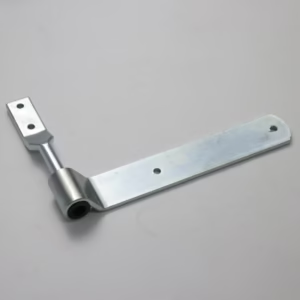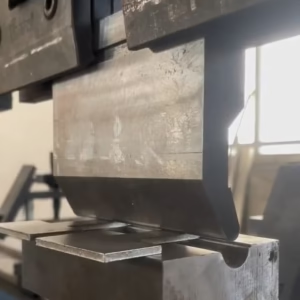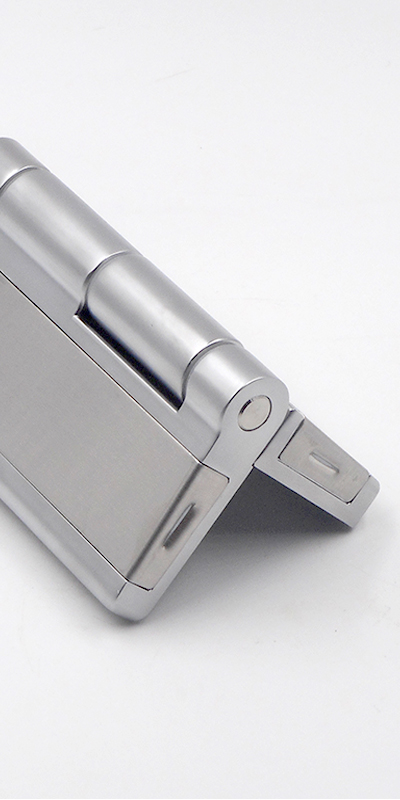Wide-throw hinges provide extended clearance ideal for industrial doors that need to swing fully open.
Wide-throw hinges are used in industrial settings where doors must clear obstructions like thick walls or wide frames, enabling up to 180° door swing. They’re essential for full access in tight or high-traffic spaces.
Wide-throw hinges go beyond standard functionality—let’s explore how they unlock efficiency in demanding industrial environments.
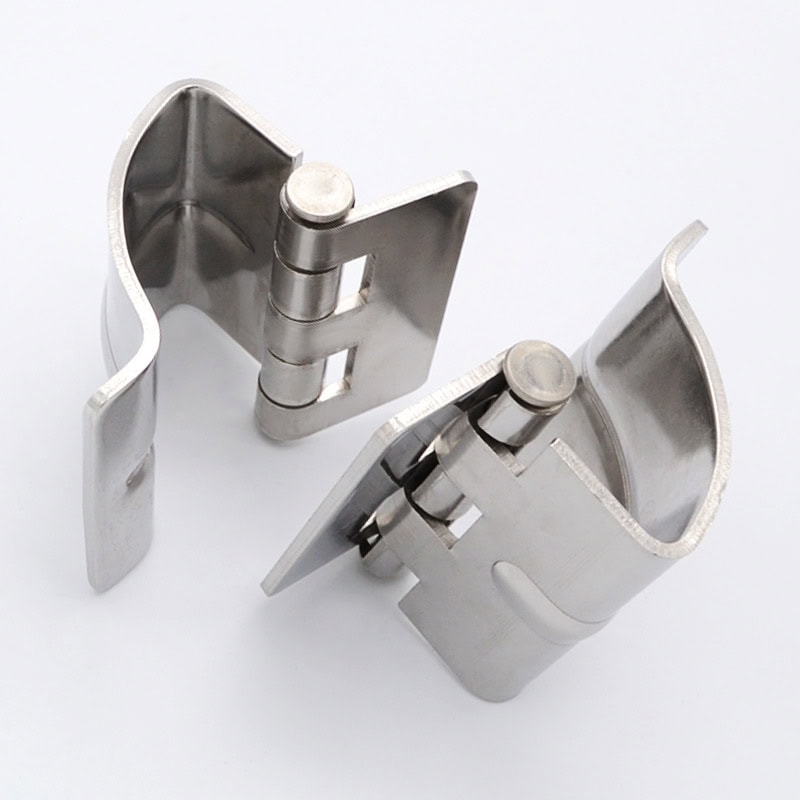
What Are Wide-Throw Hinges?
Wide-throw hinges are specially designed hinges that allow doors to swing wider than the standard 90° arc, often up to 180°. These hinges are engineered with longer leafs that project the pivot point away from the door frame, allowing the door to open completely clear of the frame. This swing-clear function is vital in industrial setups where full access is needed for equipment or personnel.
Wide-throw hinges offer extended door swing by projecting the pivot point outward, enabling full clearance from the frame. This makes them a preferred choice in scenarios involving thick doors, deep door frames, or the need to accommodate mobility aids.
Industrial Relevance and Terminology
In industrial settings, doors often connect to electrical enclosures, machine housings, or constant temperature chambers. Here, traditional hinges may not provide enough clearance for maintenance, inspection, or movement of heavy machinery. Wide-throw hinges solve that problem by allowing the door to swing around obstructions.
These hinges are also known as swing clear hinges and are widely used across industries including clean rooms, laboratories, food processing, and heavy-duty cabinet manufacturing.
How Do Wide-Throw Hinges Work?
The key functional element of a wide-throw hinge is its long leaf design. Each hinge includes two leafs joined by a central pin. In wide-throw versions, the leafs extend much further from the pin compared to traditional hinges. This extension shifts the door’s pivot point away from the frame, ensuring the door clears it entirely when opened.
Wide-throw hinges use extended leafs to offset the pivot point, allowing doors to swing wider without interference from the door frame.
Key Mechanical Design Aspects
-
Pivot Offset: The extended leafs move the hinge pivot away from the door edge.
-
Full Clearance: Doors can open flat against a wall, ideal for tight spaces.
-
Center Knuckle Mechanism: Similar to traditional hinges, the leafs are connected by a central pin and knuckle for smooth operation.
This design is particularly useful in facilities where carts, wheelchairs, or large equipment must pass through doorways—like those using trailer door hinges or cold storage room hinges.
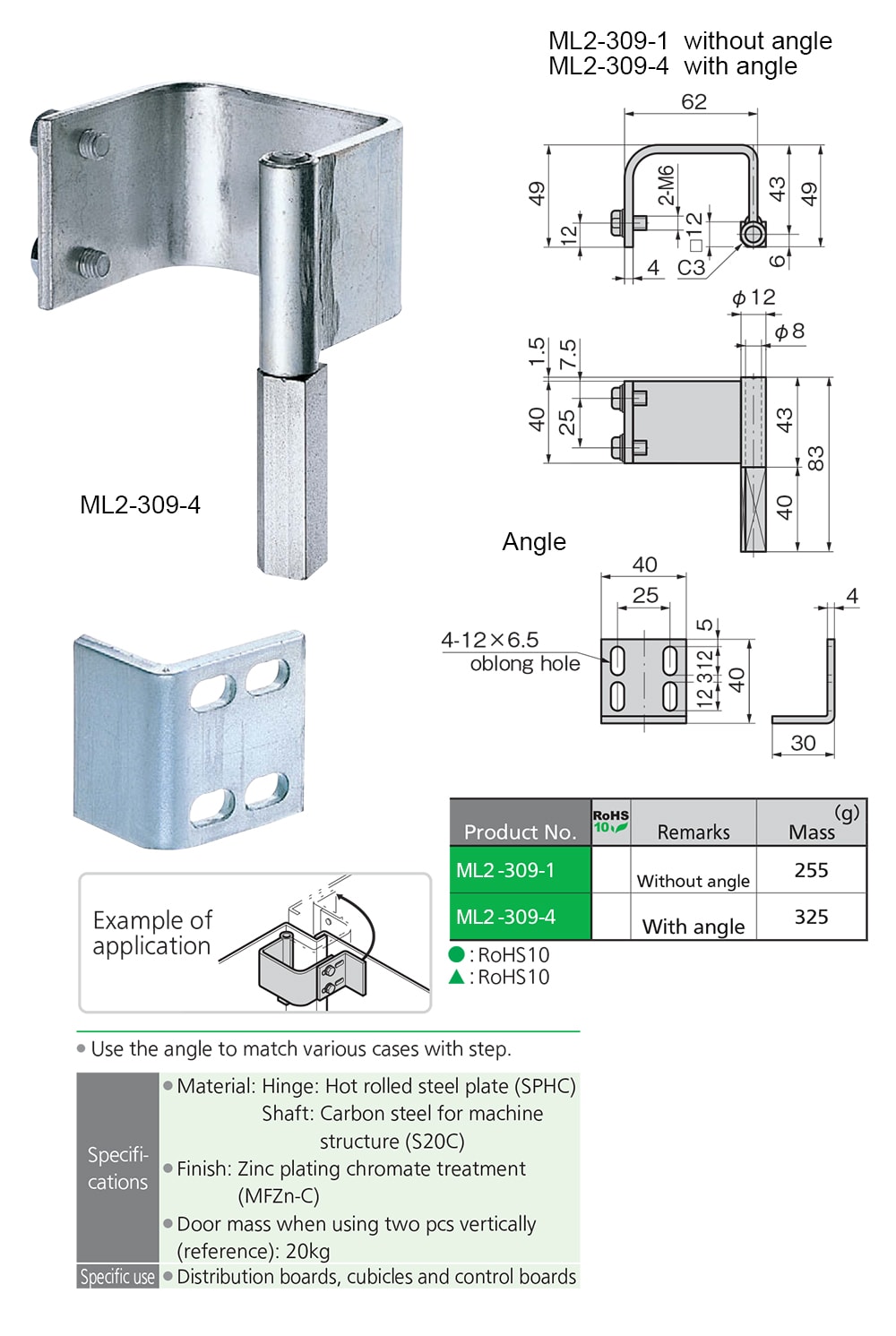
What Materials Are Used in Wide-Throw Hinges?
Wide-throw hinges are manufactured using durable materials tailored to withstand high-stress environments. Common materials include:
-
Stainless Steel: Excellent corrosion resistance; ideal for food and medical industries.
-
Aluminum: Lightweight and rust-resistant, perfect for applications requiring easy installation.
-
Brass & Bronze: Known for durability and aesthetic finish in controlled environments.
-
Carbon Steel: Cost-effective and strong, suitable for heavy-duty industrial use.
Wide-throw hinges are typically made from stainless steel, aluminum, and carbon steel to suit various industrial environments and load demands.
These hinges are often coated with electro-galvanized or hot-dipped finishes for additional corrosion resistance, especially in humid or chemical-prone settings. This makes them complementary to products like marine hinges or corrosion resistant hinges.
What Are the Standard Sizes and Specifications?
Wide-throw hinges are available in multiple size configurations to suit different door thicknesses and clearance needs. Common sizes include 4.5″x6″, 4.5″x8″, 5″x6″, and larger custom dimensions.
The hinge throw should match the door thickness plus clearance. A general formula is: Throw Width = Door Thickness + Frame Clearance + Trim Projection.
Example Calculation
| Door Thickness | Frame Clearance | Trim Projection | Required Throw |
|---|---|---|---|
| 1.75″ | 0.25″ | 0.5″ | 2.5″ |
| 2.0″ | 0.5″ | 0.5″ | 3.0″ |
Wide-throw hinges also comply with ANSI/BHMA standards, offering rated performance for commercial or industrial use. Sizing should always factor in door weight, frequency of use, and swing direction.
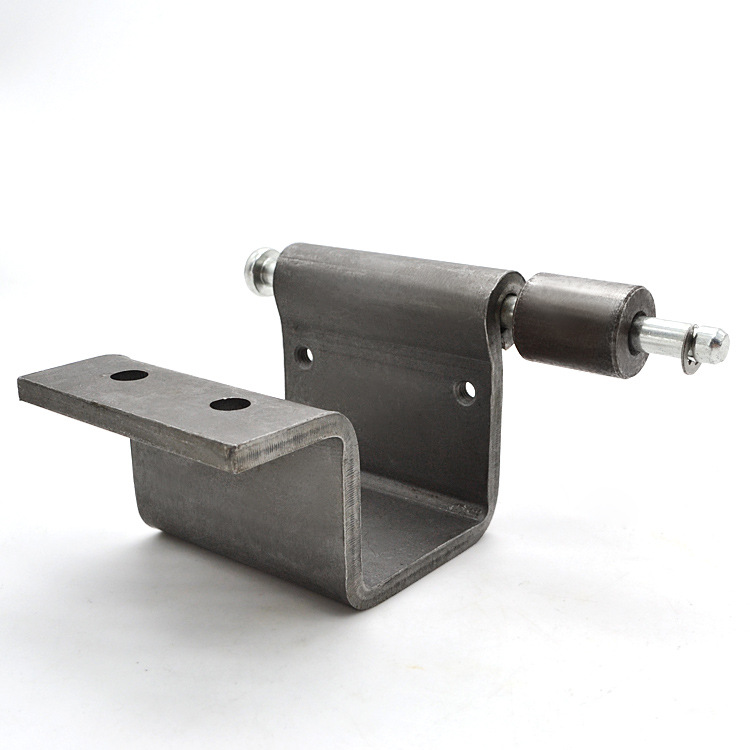
When Should You Use Wide-Throw Hinges?
You should use wide-throw hinges when your industrial application requires the door to open beyond a standard 90°—especially when dealing with deep-set frames, protruding moldings, or mobility access needs.
Use wide-throw hinges in industrial spaces where door clearance is limited or full door opening is needed for accessibility or equipment movement.
Ideal Use Cases
-
Electrical Cabinets: Where internal components require full access.
-
Test Chambers: Like climatic test chamber hinges, requiring door swing to prevent internal damage.
-
Heavy Equipment Bays: Enabling forklifts or carts to pass through without obstruction.
-
Wheelchair Accessibility: For ADA compliance in labs and factories.
If you’re replacing worn hinges in such applications, always measure the required swing distance carefully. Consider pairing with Replace Industrial Door Hinges solutions or weld on hinges for custom-fit scenarios.
How to Calculate the Right Size of Wide-Throw Hinges?
To ensure effective operation, wide-throw hinges must be correctly sized. The throw length should allow the door to clear any surrounding obstacles such as trim, wall depth, or adjacent equipment.
Use the formula: Throw = Door Thickness + Frame Clearance + Obstruction Allowance. Always round up to the next standard hinge size.
Selection Tips
-
Measure all obstructions (including wall tiles, baseboards, or raised flooring).
-
Account for ADA compliance if mobility access is needed.
-
Verify door weight and select hinges that support industrial-grade loads.
For example, in environments using heavy duty hinges or aluminum geared continuous hinges, the hinge throw must be robust enough to support repetitive motion without fail.
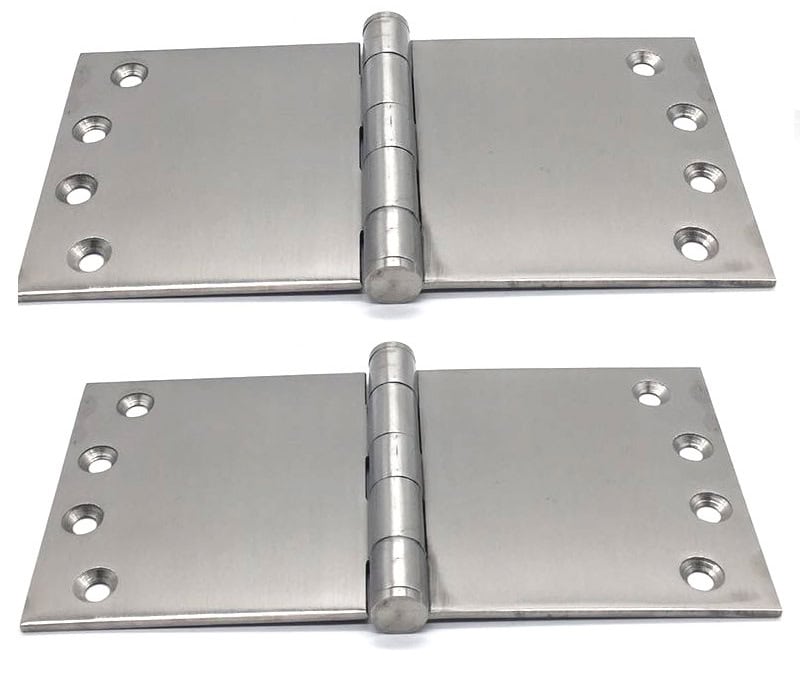
What Are the Benefits of Wide-Throw Hinges in Manufacturing?
In fast-paced manufacturing settings, doors must open wide to allow movement of tools, raw materials, or finished goods. Wide-throw hinges eliminate access limitations by providing full frame clearance.
In manufacturing, wide-throw hinges improve safety, speed of operation, and reduce damage to door edges caused by partial openings.
Operational Advantages
-
Enhanced Workflow: Equipment or workers can move freely without pause.
-
Damage Reduction: Prevents door collision with frames, reducing wear.
-
Maintenance Efficiency: Easier access to machinery or enclosures.
They are commonly used in conjunction with specialty hardware like detachable hinges, enabling fast removal of access panels or full doors for maintenance or part replacement.
How Do Wide-Throw Hinges Improve Door Clearance?
Door clearance refers to the amount of open space available when a door swings open. Traditional hinges often leave part of the door within the doorway. Wide-throw hinges solve this by pushing the door fully outside the frame path.
Wide-throw hinges eliminate obstructions by swinging the door entirely out of the doorway, providing full clearance.
Clearance Use Cases
-
Passage of Large Equipment: Industrial carts, tools, or service trolleys.
-
Tight Corridor Access: Door swings flush against walls, avoiding bottlenecks.
-
Panel Door Access: In control panels or test chambers, hinges allow full swing for technicians.
In such scenarios, wide-throw hinges offer functional superiority over butt hinges or piano hinges, which may not provide sufficient offset.
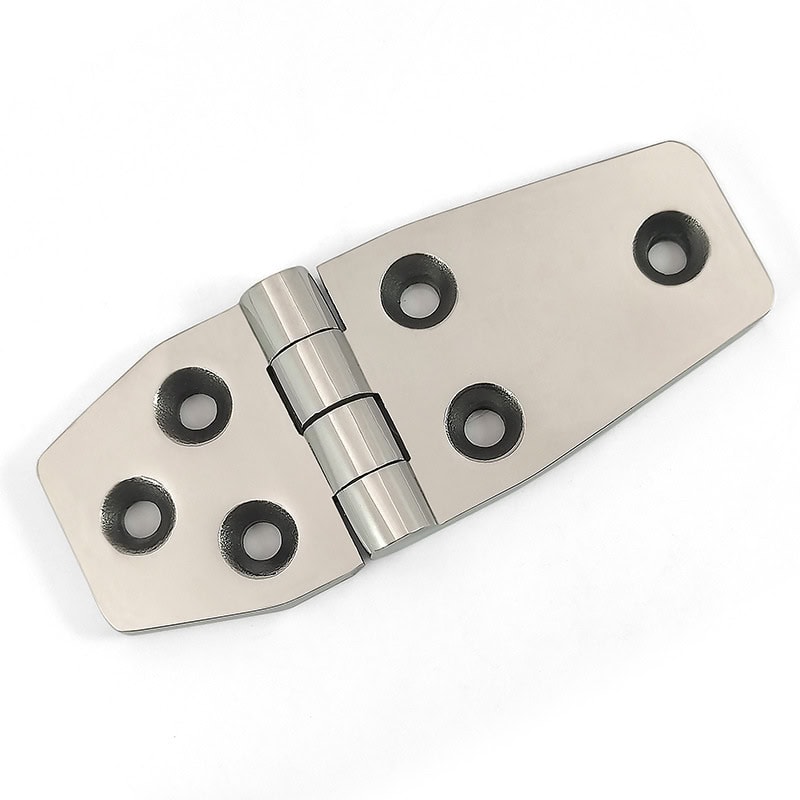
Wide-Throw Hinges vs Offset Hinges: What’s the Difference?
Offset hinges shift the hinge barrel position away from the door edge, while wide-throw hinges extend the hinge leaf length to push the pivot point outward.
Wide-throw hinges provide full clearance by extending leaf length; offset hinges alter hinge position without changing throw distance.
Comparison Table
| Feature | Wide-Throw Hinges | Offset Hinges |
|---|---|---|
| Leaf Length | Extended | Standard |
| Clearance Level | Full Frame Clearance | Partial Frame Clearance |
| Swing Angle | Up to 180° | Varies |
| Use Case | Industrial, ADA | Residential, Retrofit |
Use wide-throw hinges when complete door clearance is needed—offset hinges are better for minor realignments or visual adjustment.
Conclusion
Wide-throw hinges are essential for industrial doors requiring full opening clearance, especially where accessibility, space constraints, or equipment access is critical.

